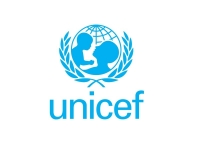Health
WITHOUT TOILETS, CHILDHOOD IS EVEN RISKIER DUE TO MALNUTRITION
LINK BETWEEN SANITATION & MALNUTRITION

(Source: Unicef)
USPA NEWS -
Lack of access to toilets is endangering millions of the world's poorest children, UNICEF said today, pointing to emerging evidence of links between inadequate sanitation and malnutrition. Some 2.4 billion people globally do not have toilets and 946 million - roughly 1 in 8 of the world's...
Lack of access to toilets is endangering millions of the world's poorest children, UNICEF said today, pointing to emerging evidence of links between inadequate sanitation and malnutrition. Some 2.4 billion people globally do not have toilets and 946 million - roughly 1 in 8 of the world's population d, efecate in the open. Meanwhile, an estimated 159 million children under 5 years old are stunted (short for their age) and another 50 million are wasted (low weight for age).
A report issued today, 'Improving Nutrition Outcomes with Better Water, Sanitation and Hygiene', from UNICEF, USAID and the World Health Organization, for the first time brings together years of research and case studies which demonstrate the link between sanitation and malnutrition. More importantly, it provides guidance for action.
Lack of sanitation, and particularly open defecation, contributes to the incidence of diarrhoea and to the spread of intestinal parasites, which in turn cause malnutrition.
Lack of sanitation, and particularly open defecation, contributes to the incidence of diarrhoea and to the spread of intestinal parasites, which in turn cause malnutrition.
Diarrhoea accounts for 9 % of the deaths of children under 5 years old each year and is essentially a faecal-oral disease, where germs are ingested due to contact with infected faeces. Where rates of toilet use are low, rates of diarrhoea tend to be high.
Children under 5 years old suffer 1.7 billion cases of diarrhoea per year. Those in low income countries are hit hardest, with an average of three episodes per year. The highest frequency is in children under 2 years old, who are weakest and most vulnerable. Multiple episodes of diarrhoea permanently alter their gut, and prevent the absorption of essential nutrients, putting them at risk of stunting and even death.
Children under 5 years old suffer 1.7 billion cases of diarrhoea per year. Those in low income countries are hit hardest, with an average of three episodes per year. The highest frequency is in children under 2 years old, who are weakest and most vulnerable. Multiple episodes of diarrhoea permanently alter their gut, and prevent the absorption of essential nutrients, putting them at risk of stunting and even death.
Some 300,000 children under 5 years old die per year - over 800 every day, from diarrhoeal diseases linked to inadequate water, sanitation and hygiene. The poorest children in sub-Saharan Africa and South Asia are particularly at risk.
Intestinal parasites such as roundworm, whipworm and hookworm, are transmitted through contaminated soil in areas where open defecation is practiced. Hookworm is a major cause of anaemia in pregnant women, leading to malnourished, underweight babies.
Intestinal parasites such as roundworm, whipworm and hookworm, are transmitted through contaminated soil in areas where open defecation is practiced. Hookworm is a major cause of anaemia in pregnant women, leading to malnourished, underweight babies.
Some countries have made significant progress in addressing both access to sanitation and the nutritional status of their children. Many have successfully used UNICEF's 'Community Led Total Sanitation' approach, in which the affected populations themselves devise local solutions to the problem of open defecation.
- Pakistan met the 2015 Millennium Development Goal to halve the proportion of people who in 1990 did not have access to improved sanitation. Using CLTS, entire communities abandoned the practice of open defecation, leading to improved health and nutrition indicators among their children.
- Pakistan met the 2015 Millennium Development Goal to halve the proportion of people who in 1990 did not have access to improved sanitation. Using CLTS, entire communities abandoned the practice of open defecation, leading to improved health and nutrition indicators among their children.
- Ethiopia mobilized community workers and achieved the largest decrease globally in the proportion of the population who defecate in the open. Despite population growth, the practice reduced from 92 per cent (44 million people) in 1990 to 29 per cent (28 million people) in 2015.
- In Mali the CLTS approach was also used in communities with high malnutrition rates, exacerbated by drought in the Sahel region. Improved access and use of latrines ensued, and improved health and nutrition in children.
- In Mali the CLTS approach was also used in communities with high malnutrition rates, exacerbated by drought in the Sahel region. Improved access and use of latrines ensued, and improved health and nutrition in children.
- During the emergency linked to conflict in the Democratic Republic of the Congo, integrated nutrition and WASH interventions were used for displaced communities. Children under 5 years old saw significantly reduced undernutrition and waterborne diseases. Around 60 per cent of the population constructed latrines and some 90 per cent of malnourished children returned to normal weight during a 12-month period.
Source : UNICEF China
Ruby BIRD
http://www.portfolio.uspa24.com/
Yasmina BEDDOU
http://www.yasmina-beddou.uspa24.com/
Source : UNICEF China
Ruby BIRD
http://www.portfolio.uspa24.com/
Yasmina BEDDOU
http://www.yasmina-beddou.uspa24.com/
Ruby Bird Yasmina Beddou Malnutrition Unicef Sanitation Toilets Childhood Millions Access Guidance Action Defecation Intestinal Parasites
Liability for this article lies with the author, who also holds the copyright. Editorial content from USPA may be quoted on other websites as long as the quote comprises no more than 5% of the entire text, is marked as such and the source is named (via hyperlink).






